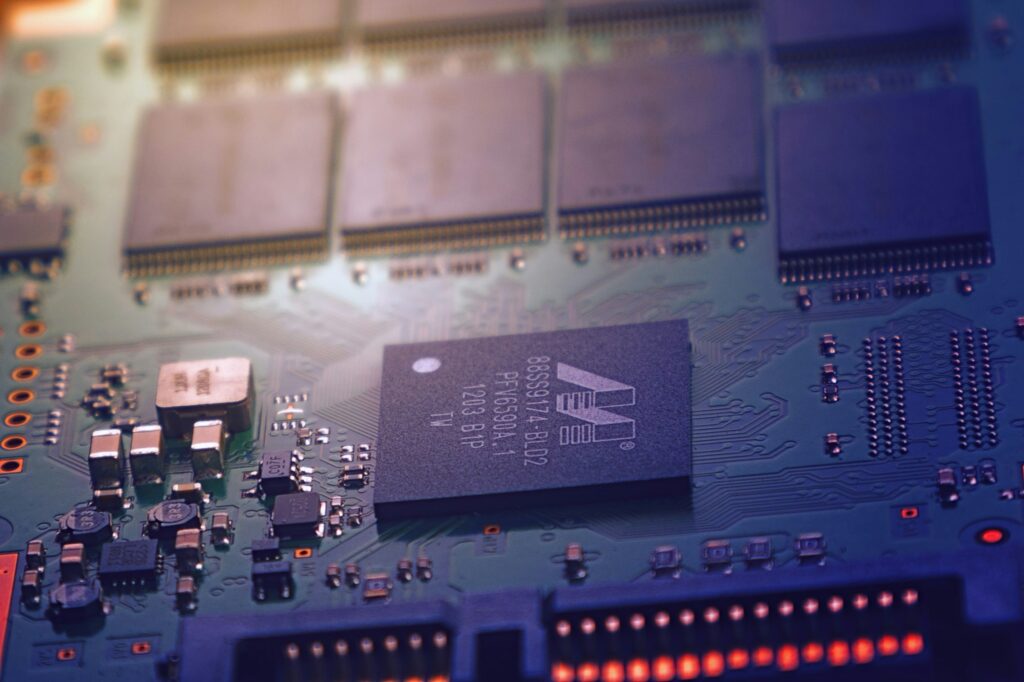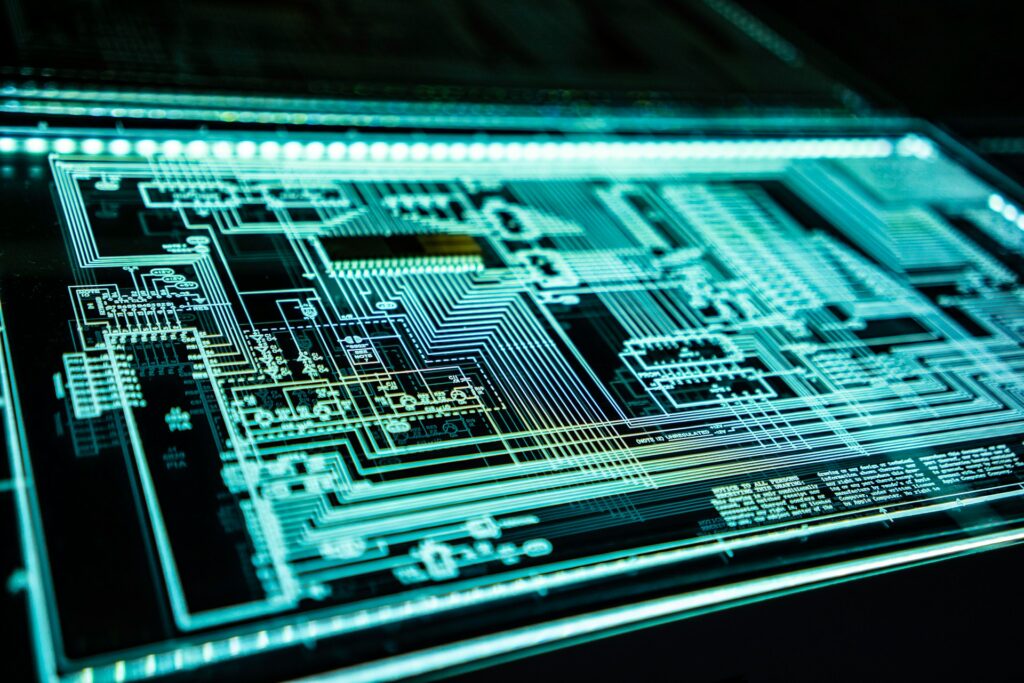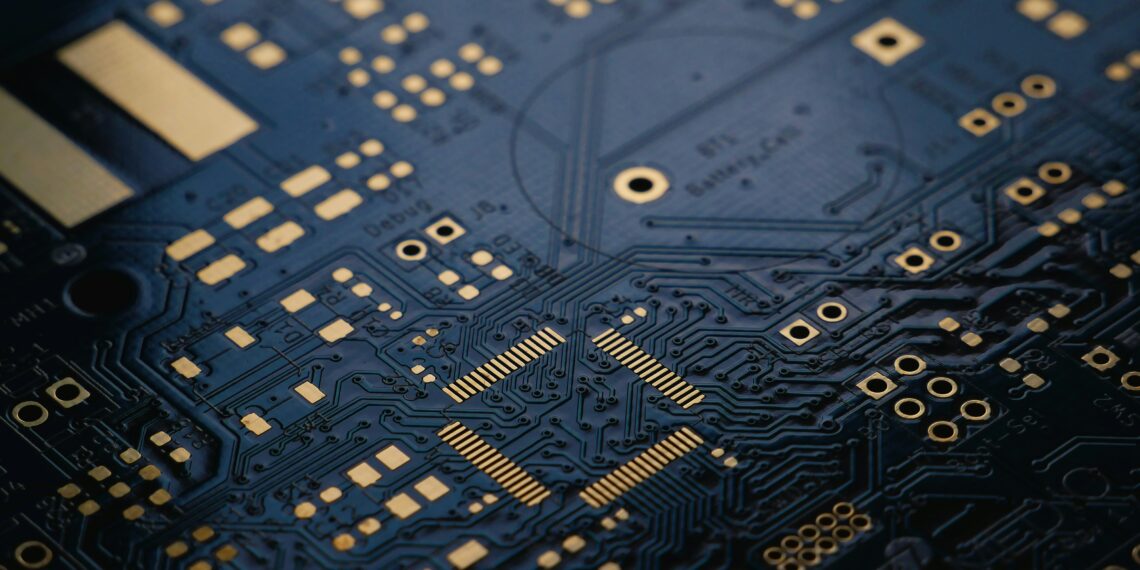Learn about What is Chiplet technology. Learn about Chiplet technology, a modular approach to semiconductor design where smaller chips (chiplets) combine for enhanced performance, scalability, and cost efficiency. Discover its impact on high-performance computing, AI, gaming, and cloud infrastructure.
Introduction to Chiplet Technology
Chiplet technology changes the design of semiconductors for the better. Instead of relying on a huge, one-piece monolithic chip, manufacturers now use several smaller chips, called chiplets, which combine to deliver enhanced performance, efficiency, and scalability.
As Moore’s Law enters an era of slowing down, chiplet-based architecture offers an alternative to improving computational power without further shrinkages of transistors. The modular architecture thus allows the manufacturers to mix and match various functionalities and reduce costs and complexities.

What is Chiplet technology?
Chiplet technology is a modular approach to semiconductor design in which multiple smaller specialized chip chiplets are integrated into one package. This incentivizes manufacturers to combine different functionalities in terms of processing, memory, and connectivity onto different chiplets to optimize some performance metrics and cost-efficiency.
This adds flexibility to chip development, reduces chip time-to-market, and increases scalability. Chiplet technology is thus finding traction in high-performance computing, allowing for a much more customizable and efficient design strategy compared to conventional monolithic chip designs.
Key Points About Chiplet Technology
1. Modular Design
Chiplet technology allows for a modular design in which different functional blocks can be separately designed, fabricated, and integrated; flexibility, cost reduction, and rapid innovation are thereby enhanced through mixing and matching of application-specific components, improving scalability and overall performance.
2. Interconnect Technology
There are advanced interconnect technologies, including silicon bridges and high-bandwidth interposers, facilitating efficient chiplet communication.
These interconnect minimize latency while maximizing power efficiency, allowing seamless integration of heterogeneous components; this renders chiplet-built architectures relatively more powerful and cost-effective than traditional monolithic chip designs.
3. Mix and Match Capabilities
Within chiplet schemes, manufacturers can coalesce different processing units, types of memory, and accelerators from different sources. Such flexibility assists in optimizing performance, reducing costs, and extending product life cycles. By shoehorning chip designs for workloads, the manufacturers need not build entirely new semiconductor architectures from scratch.
Advantages of Chiplet Technology
Cost-effectiveness
Chiplet technology lowers design and manufacturing costs because it reuses already-developed components and brings them together in a modular manner. This reduces the need for new, expensive semiconductor designs and optimizes production processes for better profitability of high-performance chips across industries.
Performance Improvement
With an improvement in overall performance by combining specialized chiplets optimized for specific functions, one can now unify high-performance compute units, memory, and accelerators in a single package with increased processing, reduced latency, and optimized power consumption, which is convenient for overall system performance.
Scalability
With chiplet-based designs, scaling becomes an advantage in that upgrades and modifications can be made easily without a full chip redesign. This means manufacturers can add different chiplets or switch them around as demand comes, applying new technologies and therefore enabling a product to evolve with the latest advancements in hardware and software.
Faster Development Cycles
Chiplet technology accelerates the development timeline, as engineers can reuse demonstrated components and integrate them more rapidly. This modular approach provides smooth design and testing paths, lowering time-to-market, and allowing the company to respond more quickly to variations in consumer requirements or technological advancements.
Example Applications of Chiplet Technology
1. High-Performance Computing (HPC)
Chiplet technology enables the integration in HPC of powerful processors memories and accelerators for the performance demanded on data-heavy tasks like simulations and scientific computations. Using specially developed chiplets as per the specifications needed for computation, HPC systems can achieve optimum efficiency and throughput.
2. Artificial Intelligence (AI)
AI is one place where chiplet technology really can be applied with beauty to gather sundry AI accelerators within GPUs or TPUs, processors, and memory. This kind of combination can give rise to high-performance, open-configuration AI systems that can be proudly targeted at different workloads for the betterment of training speeds, model inferences, and completion of AI processing altogether.
3. Networking Chips
Chiplets add higher efficiency levels by combining networking chips with multiple subsystems, such as packet processors, security modules, and high-bandwidth interfaces. This modulation enables higher data transfer, less latency, and scaling for integrated 5G and data center networking scenarios.
Applications of Chiplet Technology
1. High-Performance Computing (HPC)
Chiplets greatly facilitate the integration of specialized components, including the processor, accelerators, and memory, into one package and enhance HPC. This rendering of modularity provides extraordinary computational power and scalability for tasks like scientific simulation, large-scale data analysis, and real-time modeling.
2. Gaming Processors
In gaming, chiplet technology enhances gaming processors by packing together CPUs, GPUs, and memory chips for high performance. Fast rendering, smooth gameplay, augmented graphics quality, enhanced user experience, more demanding gaming environments, and reduced overall cost for gaming hardware are some of the implications.
3. AI and Machine Learning
Chiplet-based designs help artificial intelligence and machine learning applications integrate accelerators like TPUs and GPUs with CPUs, resulting in a custom design providing a high degree of parallelism.
This unique implementation effectively minimizes inference and training durations and improves energy efficiency, thus making chiplet technology very instrumental in building AI-based solutions at scale.
4. Cloud Computing
Cloud computing services rely on chiplet technology to optimize server processors and other components like memory and networking. This produces a high-performance cloud infrastructure that is scale-aligned for any workload; this improves efficiency while lowering costs and adapting quickly to shifting cloud requirements from data storage to virtual machine management.
How Chiplets Differ from Traditional Monolithic Chips
Monolithic Chips
Traditional chips are built as one entity. This necessitates a large and costly manufacturing process that becomes increasingly complex as the transistor becomes smaller.
Chiplet-Based Designs
Chiplets are small chips to are glued together and interconnected with functions assigned to them such as computing, memory, and I/O operations. Improved manufacturing yields are obtained from being able to mix different technologies into one package.
Why Chiplet Technology Matters
In the past, performance was boosted by hundreds of billions of transistors packed into a single die. This approach, however, faces limits of size, yield, and efficiency. With chiplets, manufacturers can create a small, specialized module linked via high-speed interconnects.
Hence, this shift enables better power efficiency, lower costs, and the ability for firms to build custom computing solutions. Leading semiconductor firms, including AMD, and Intel, have begun making the most of this revolution.
Challenges in Chiplet Integration
In integrating chiplets, the challenges include the complex interface design that warrants advanced solutions for proper, seamless communication between the components. Compatibility is additionally imposed by heterogeneous manufacturing processes, yet reliable die-to-die communication requires low-latency interconnects.
Furthermore, thermal management becomes tricky with multiple chiplets being placed nearby that could lead to heat bottlenecks, jeopardizing system reliability and efficiency.
Which companies are using chiplet technology?
Chiplet technology is now being adopted by major semiconductor companies such as AMD and Intel in CPUs and GPUs for modular designs and performance enhancements. These companies hope to bring down costs, scale up performance, and speed up development cycles all by integrating chiplets into their products.
Can chiplets improve gaming performance?
Modular integration of special chips like GPU, CPU, and memory-module-type components will greatly enhance gaming performance in the chiplet domain. This means a boost in graphics, rendering speeds, and smoothness of gameplay for wonderful gaming experiences.

Are chiplet-based chips more expensive?
No, chiplets might cost higher upfront due to the complex design and integration costs. In the long run, costs will be recovered because chiplets can be reused, scaled up, and manufactured more effectively, thus being cheaper than traditional monolithic chips over time.
Conclusion
The Chiplet technology is revolutionizing the semiconductor industry by giving an alternative with a scalable, economic horizon, and performance-engendering path in comparison to the conventional monolithic chips.
These small specialized modules will increase computing power, lower costs, and enhance energy efficiency. With the development of the industry, chiplet-based processors will dominate tomorrow’s computing world and enable breakthroughs in AI, gaming, cloud computing, and more.






